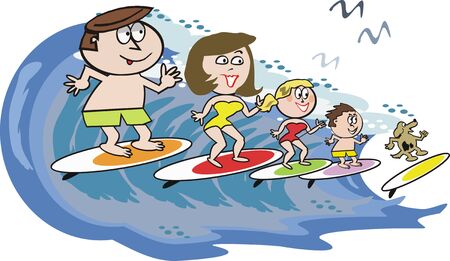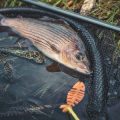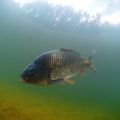Choosing the Ideal British Coastal Spot
When it comes to planning a memorable family day out by the sea, selecting the right location is half the fun. The UK’s coastline offers a patchwork of family-friendly fishing spots, each brimming with its own unique charm and practical advantages. From the sun-kissed Cornish coves in the south-west, where colourful fishing boats bob gently on turquoise waters, to the rugged Scottish bays up north, where seals and seabirds are regular spectators, there’s a destination for every clan. Consider public amenities: look for spots with accessible parking, clean loos, and nearby cafés or ice-cream huts – perfect for that essential tea break or a celebratory treat after landing your first catch. Accessibility is key for families with young children or older relatives; many popular beaches and piers offer step-free access and well-kept paths. Don’t overlook local highlights either: heritage fishing villages like Whitby boast stories as captivating as their scenery, while Sussex shingle beaches often host lively weekend markets. By weighing up these elements, you’ll find a spot where comfort meets adventure, ensuring everyone from toddlers to grandparents can soak up the salty air and reel in unforgettable memories.
Essential Shore Fishing Gear for All Ages
When it comes to a family-friendly day out along the British coast, having the right gear can make all the difference. The unpredictable UK weather, mixed-age groups, and varying experience levels require a thoughtful approach to assembling your tackle and attire. Here’s how to prepare so everyone—young or old—can fish comfortably and safely.
A Practical Tackle List
Choosing the right equipment is crucial for both enjoyment and safety. For families, simplicity is key: opt for user-friendly rods, reels, and minimal but effective bait options. Lightweight gear reduces strain on smaller arms and ensures even the less experienced can join in.
| Tackle Item | Recommended For | Why It Matters |
|---|---|---|
| Short Spinning Rod (6-8ft) | Younger children & beginners | Easy to handle; less cumbersome for small hands |
| Medium Beachcaster (9-12ft) | Older children & adults | Greater casting distance; suitable for varied conditions |
| Simple Fixed-Spool Reel | All ages | User-friendly, fewer tangles; robust for rough use |
| Basic End Tackle (hooks, weights, floats) | Everyone | Straightforward rigs prevent confusion and enhance success rates |
| Bait Box with Local Baits (lugworm, mackerel strips) | All participants | Keeps bait fresh and accessible; local baits attract native species |
Dressing for the Elements: Comfort Meets Safety
The British coastline is notorious for its changeable weather. Layering is essential: start with moisture-wicking base layers, add insulating mid-layers, and finish with a waterproof outer shell. Don’t forget wellies or sturdy waterproof boots—rocky shores and tidal flats can be slippery or unexpectedly wet.
Clothing Checklist by Age Group:
| Age Group | Key Clothing Items | Notes on Safety & Comfort |
|---|---|---|
| Younger Children (5-10) | Thermal base layers, fleece tops, waterproof trousers, wellies, sun hat/rain hat | Bright colours help keep an eye on little ones; hats protect from sun or drizzle alike |
| Teens & Adults | Lined jackets, breathable waterproofs, layered fleeces, walking boots/wellies, cap/beanie | Pockets for essentials; flexible clothing adapts as temperatures shift through the day |
| Seniors/Grandparents | Cushioned seat pad, extra-thick socks, windproof jackets, gloves, scarf/buff | Additional warmth helps avoid chills when sitting for longer spells on breezy beaches |
A Few Final Tips:
Packing a compact first aid kit and high-factor sunscreen is always wise. Hand wipes are handy after handling bait. Finally, bring plenty of snacks and warm drinks in a flask—nothing beats a hot cuppa when the sea breeze picks up!

3. Understanding Tides, Wildlife, and Conservation
One of the joys of a family shore fishing adventure on the British coast is discovering the delicate interplay between tides, wildlife, and the surrounding environment. To ensure a successful and responsible outing, it’s essential to learn how to read tide times—a skill that not only increases your chances of catching fish but also keeps everyone safe. Consult local tide tables or use trusted apps; aim to fish during the two hours leading up to high tide and just after, when fish are most active and shoreline access is at its best.
Respect for local wildlife is equally crucial. British coasts are home to a stunning array of birdlife—from oyster catchers to sandpipers—along with seals, crabs, and countless smaller creatures. Encourage children to observe quietly, avoid disturbing nesting sites, and leave rock pools undisturbed. These simple acts foster a sense of wonder while teaching young anglers about the interconnectedness of coastal ecosystems.
Adhering to British coastal conservation guidelines is part and parcel of any responsible fishing trip. Always follow the ‘leave no trace’ principle: take all litter home, use barbless hooks where possible, and never remove undersized fish or protected species. Many areas have specific regulations or marine protected zones—check signage at car parks or consult local angling associations beforehand. By weaving these practices into your family outing, you’ll nurture not just fishing skills but also a lifelong respect for nature—a legacy as valuable as any catch of the day.
4. Preparing Family-Friendly Bait and Snacks
Getting your bait and snacks sorted is an essential part of planning a successful family shore fishing trip along the British coast. The right preparations not only keep everyone energised but also help introduce children to the joys of hands-on angling and the simple pleasures of a seaside picnic.
Easy, Engaging Bait Preparation
When it comes to bait, involving the whole family can be fun and educational. Choose easy-to-handle options that are effective for common British coastal species like flatfish, mackerel, or whiting. Here’s a quick guide:
| Bait Type | Why It’s Great | How Kids Can Help |
|---|---|---|
| Lugworm or Ragworm | Classic UK baits, readily available at tackle shops, attract a wide range of species. | Let children help rinse worms in seawater and place them in bait boxes. |
| Mackerel Strips | Easy to prepare and highly effective for summer fishing. | Supervise older kids as they help cut strips using child-safe scissors. |
| Sweetcorn or Bread | Non-messy and perfect for younger children to handle; good for smaller fish near piers. | Kids can thread sweetcorn onto hooks or tear bread into small pieces. |
Classic British Seaside Snacks & Picnic Ideas
No day out on the coast would be complete without a nod to beloved British snacks. Think easy-to-pack, crowd-pleasing foods that suit all ages. Here are some ideas for your shore fishing feast:
| Snack/Picnic Item | Why It Works Well | Handy Tip |
|---|---|---|
| Cornish Pasties or Sausage Rolls | Tasty hot or cold, sturdy enough to survive a rucksack journey. | Wrap in foil to keep warm and crumb-free. |
| Packed Sarnies (Egg mayo, ham & cheese) | Customisable for fussy eaters, easy to make ahead of time. | Use crusty rolls to avoid sogginess from sea breeze. |
| Crisps & Fruit Pots | Effortless finger food; apples, grapes, or satsumas travel well. | Pre-portion into reusable tubs for less mess. |
| Cream Tea Treats (Scones, jam & clotted cream) | A little indulgence for grown-ups and children alike after fishing fun. | Pack scones and spreads separately—assemble on site! |
| Flasks of Tea/Hot Chocolate & Squash Bottles | Keeps everyone hydrated and warm when the coastal wind picks up. | Bring insulated mugs for comfort and eco-friendliness. |
Packing Tips for Maximum Enjoyment
- Bait first aid: Bring wipes or hand gel for easy clean-up after handling bait.
- Keeps food fresh: Use cool bags with ice packs—especially if you’re bringing dairy treats or pasties.
- Tidy up together: Pack rubbish bags so everyone can help leave the beach as tidy as you found it—a valuable lesson in respecting nature.
The right blend of hands-on bait prep and classic British nibbles will keep spirits high throughout your family’s coastal adventure, making memories that last far beyond the final cast of the day.
5. Fun Activities Beyond Fishing
Even if the fish aren’t biting, the British coastline offers a wealth of family-friendly amusements that go well beyond casting a line. Embrace the sense of discovery with rockpooling: grab a bucket and net, and let little explorers hunt for crabs, starfish, and sea anemones nestled among tidal pools. Many British beaches—like those in Cornwall or Northumberland—are renowned for their rich marine life, making rockpooling an educational delight as well as great fun.
For those with an eye for hidden treasures, beachcombing is another quintessentially British seaside pastime. Search for colourful sea glass, smooth pebbles, or even the occasional fossil along shingle or sandy stretches. It’s a gentle pursuit that encourages mindfulness and appreciation of nature’s small wonders, perfect for winding down after an energetic morning.
If you’re keen to stretch your legs and soak up some scenery, set off on one of Britain’s many coastal walks. The South West Coast Path or sections of the Wales Coast Path offer accessible routes with breathtaking views and plenty of picnic spots en route. Bring binoculars for impromptu birdwatching; you might spot oystercatchers or even a passing seal bobbing offshore.
Don’t forget simple pleasures: fly a kite on blustery days, build sandcastles together, or indulge in an ice cream from a local vendor. These little rituals make every trip memorable, ensuring a brilliant day out even if your fishing luck runs short. With so much to see and do, the British shore really is the perfect setting for family adventure—rain or shine.
6. Safety, Comfort, and British Coastal Etiquette
When it comes to a family-friendly day of shore fishing on the British coast, safety and comfort should always be your top priorities. The UK’s coastal weather can shift dramatically in a matter of hours, so layering up is key – think waterproof jackets, sturdy wellies or walking boots, and plenty of warm jumpers for everyone. Always check local tide times before you set out, as tides around the British Isles can be swift and surprising; avoid getting cut off by a rising tide by planning your fishing spots with care.
Children should never be left unsupervised near the water, especially when rockpooling or casting off piers, and it’s wise to have a first aid kit close at hand. Sun protection is just as important as rain gear – even on cloudy days, those sea breezes can hide a deceptively strong sun. Don’t forget snacks and hot drinks in a flask; there’s nothing like a cup of tea or cocoa to warm chilly hands after an early morning on the shingle.
Equally important is respecting the community spirit and etiquette that defines Britain’s most beloved angling locations. Many popular beaches and piers are shared spaces with dog walkers, swimmers, and fellow anglers. Be mindful of casting lines near others, keep tackle tidy to avoid trip hazards, and always take your litter home – leaving no trace ensures these precious stretches of coastline remain beautiful for everyone.
If you’re fishing in areas overseen by angling clubs or subject to local bylaws, make sure you know the rules: some spots require permits or restrict certain bait types to protect local wildlife. Engaging locals with a friendly “morning!” or “afternoon!” often goes a long way; the British seaside is as much about camaraderie as it is about catching fish.
With thoughtful preparation and a respect for both nature and neighbour, your family’s shore fishing adventure will be safe, comfortable, and warmly welcomed wherever you cast your line along Britain’s diverse and storied coast.


